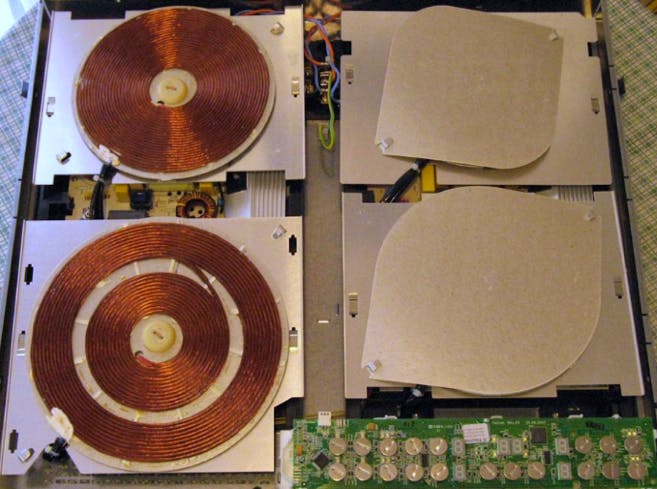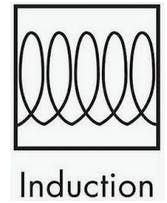How do induction hobs work?
What makes induction cooking different from electric or gas?
Induction hobs work by heating the pan directly rather than heating the hob glass. This means that they get up to temperature much quicker than gas or other forms of electric hobs.
How does an Induction hob work?
Beneath the glass surface there are induction coils made of copper wire that create a magnetic field as electricity is passed through them. If a pan with a ferrous magnetised base is placed on the hob surface, the magnetic field causes it to heat up directly. Non magnetic pans will remain cold and will not work on this type of hob.
There is a cooling fan on most induction hobs to keep the components cool during operation.
You will hear a slight clicking as the zones pulse on and off which is slightly different to a normal ceramic hob.

What types of pans can you use with induction hobs?
Because of the way induction hobs work, you will need pans that are specifically designed for these types of hobs. The best pans are made from ferrous metals such as stainless steel (18/10 grade) and cast iron. Other types of pans, such as, aluminium, copper, glass and anodised won’t work unless they have an induction plate built into the base of the pan.
How do you check if your existing pans are suitable?
Often pans will have the word induction or the coiled spring symbol on the base of the pan or on the packaging.

If you can’t see the symbol then the easiest way to check is by seeing if a magnet will stick to the base of the pan. If the pans are stainless steel but the magnet does not stay on properly then it could be that they are not 18/10 grade.
Safety:
With no open flame and almost no residual heat, an induction hob is certainly the safest way to cook.
If you wear a pacemaker or some sort of similar device you should be careful when standing next to or using the hob. It is recommended that you stand at least 2 feet away from the appliance or seek the advice of your doctor.
How energy efficient are Induction hobs?
The efficiency of energy transfer for an induction hob is around 84% vs 74% for a normal ceramic and this equates to a saving of approximately 12% for the same amount of heat transfer. An induction hob is slightly more expensive to buy but will be cheaper to run than a conventional ceramic hob.
Speed of Induction vs Gas?
Induction hobs can heat a big saucepan of water in less than 3.5 minutes from tap temperature vs 8.5 minutes for a standard gas hob according to a Which? test.

